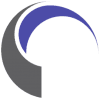On-page SEO plays a crucial role in the success of your website. A well-crafted on-page SEO strategy makes it possible for your website to be found organically on Search Engine Results Pages (SERPs) and generate quality traffic. By investing time and energy into on-page SEO, you can ultimately increase brand awareness, grow your customer-base, and drive more conversions.
In this guide we take a look at some of the best practices for on-page SEO, including useful tips on how to optimise your website correctly, from the creation of SEO-friendly content, to implementation of webpage meta descriptions and title tags.
What is the Difference Between On-Page SEO and Off-Page SEO?
There are two types of SEO strategies used today: On-Page SEO and Off-Page SEO. Before we dive deeper into on-Page SEO practices, it’s important to understand the difference between the two.
In short, on-page optimisation is the process of optimising both the content and the HTML source code on your own website, while off-page optimisation consists of building authoritative external links that point back to your website for credibility.
Hubspot puts it more simply:
- On-Page SEO is what a site ‘says to a search engine.’
- Off-Page SEO is what ‘other sites say’ about a site.
Both are valuable for getting your website quality traffic and ranking higher on SERPS.
Creating SEO-Friendly Content for Your Target Audience
Source: Semrush
Your content plays the biggest part in your on-page SEO. Potential visitors use search engines to find answers to their problems, and it is your content’s job to give them the answers they need. That’s where keywords come in.
Doing thorough keyword research will help you to understand what your target audience is searching for online. From there, you can create customer-focused content that is unique and solution-based. There are various online tools that can help with keyword research, such as Semrush, Ahrefs and Google Keyword Planner. Look for a combination of high-volume keywords and low-volume keywords to include in your content to increase your chances of success.
Be mindful of the amount of keywords you use for each piece of content—it’s very easy to over-do it, and Google can detect keyword stuffing. As a result, you could be penalized for unnatural keyword usage.
Creating a Clear Heading Structure
Having a good page layout and heading structure is important for the user experience. With a clear heading structure set out on the page, the content will be easier for users to read and understand. Try to use relevant keywords in the headings where you can. Visitors are more likely to stay and read your content if their search terms are clearly visible in headings and subheadings.
H1 and H2 headings do not appear on the SERPs, but they do provide contextual cues as to what a webpage is all about. The “H1” and “H2” refer to how these headings are marked up in HTML code. H1 headings are generally top-level headings such as blog post titles, and H2 headings are the content subheadings, useful for breaking up big blogs of text.
Your heading structure should always follow a clear order to avoid hierarchy issues. For example: An H2 should always follow an H1, an H3 should always follow an H2, and so on. The Headings Map app can help to detect issues with heading structure hierarchy.
Implementing Internal Linking
Implementing internal links that connect to other pages on your website is not only useful for users, but great for SEO. If a specific page on your website receives a lot of links from other pages, this will indicate to Google that it is a high value page, which can help to improve its search rankings.
Consider where you choose to insert your internal links. Links that are implemented near the beginning of the page will have more impact than those at the bottom. The same rule applies to keywords. Read our blog on link building to learn how to use links best.
Optimising Images with Alt Text
Your website’s images provide a great opportunity to gain organic traffic to your website. Every picture or image on your website should implement alternative text (alt text). Alt text is the written copy will appear if the image does not load, and what will be read out by a screen reader for the visually impaired.
Good alt text is both descriptive and keyword rich. Inserting relevant keywords into brief, yet descriptive text will help search engines understand your content better. Most website content management systems, such as WordPress, allow you to edit your alt text simply by editing your image and filling in the alt text field.
Creating Meta Descriptions & Title Tags
Source: Google
Every webpage on your website should include a well-written meta description and title tag. Meta descriptions and title tags help search engines understand the content on your webpage.
The title tag is the HTML element that specifies the web page title. A title tag should be no more than 70 characters long, and should always include a keyword and the website name. Although they don’t have a direct impact on your search rankings, they do have an impact on click-through rates, which can indirectly impact rankings.
The meta description is located under the title tag and URL. It provides a brief, descriptive summary of what your page will be about. Each meta description should include a relevant target keyword and a call to action, so that visitors are driven to visit your page. Try to make full use of the ideal 160-character length to fully optimise your meta description.
Optimising the URL Slug
A URL slug is the address of a specific webpage. The slug comes after the main website address (e.g. pureseo.com/seo). Optimising URL slugs is an important part of SEO strategy, especially for companies that create ongoing content, such as blog posts. URL slugs should be kept brief and incorporate target keywords to improve SERP rankings. Hyphens are used for separating words, and only the most important words are included in the URL slug. As a reference, our blog post about the Best SEO practices for Writing blog posts uses the URL slug: /blogging-seo-best-practices.
Optimise Your Website Today: Get in Touch with the Pure Seo Team
It’s never too late to start optimising your website. Improving your SEO strategy could make all the difference to your success. Contact the team at Pureseo today for professional SEO assistance. Let’s get your website ranking high!

